What is Agroecology?
Agroecology is a holistic and integrated approach that simultaneously applies ecological and social concepts and principles to the design and management of sustainable agriculture and food systems. It seeks to optimize the interactions between plants, animals, humans and the environment while also addressing the need for socially equitable food systems within which people can exercise choice over what they eat and how and where it is produced. Agroecology is concurrently a science, a set of practices and a social movement and has evolved as a concept over recent decades to expand in scope from a focus on fields and farms to encompass the entirety of agriculture and food systems. It now represents a transdisciplinary field that includes the ecological, socio-cultural, technological, economic and political dimensions of food systems, from production to consumption.
It is no longer possible to look at food, livelihoods, health and the management of natural resources separately. Embracing systems–thinking through holistic approaches is needed to address these complex and interdependent challenges. The fundamental connection between people and the planet, with sustainable agriculture and food systems, is at the heart of the 2030 Agenda for Sustainable Development, which stresses the urgent need to take concerted action and pursue policies directed at transformational change. Ending poverty and achieving zero hunger, while ensuring inclusive growth and sustainably managing the planet’s natural resources, all in the context of climate change and biodiversity loss, will only be possible through holistic and integrated approaches that respect human rights.
Agroecology represents an overarching and comprehensive systems framework to guide public policies towards sustainable agriculture and food systems. It enhances public efficiency by fostering integrated and inter-ministerial policy design and implementation, bringing together agricultural and food sectors that are often disaggregated. It actively engages different stakeholders through inter-disciplinary mechanisms which favour a responsible and transparent governance of resources. As a result, agroecological transitions can support the simultaneous achievement of multiple sustainability objectives – economic, environmental, social, nutritional, health and cultural – holistically and in integrated manner at different levels and scales while being adapted for different environmental and cultural contexts.
Agroecology is based on bottom-up and territorial processes, helping to deliver contextualized solutions to local problems with people at the centre. There is no single way to apply agroecological approaches – it depends on local contexts, constraints and opportunities but there are common principles that have been articulated in the framework of the 10 Elements of Agroecology.
The 10 Elements of Agroecology framework
FAO developed the 10 Elements of Agroecology framework to assist countries in fostering transformative change. The 10 Elements are interlinked and interdependent and represent a simplified, yet holistic, way to think about reality. They describe essential components, key interactions, emergent properties and desired enabling conditions in agroecological transitions towards sustainable agriculture and food systems. The 10 Elements are a useful analytical tool to facilitate decision-making by practitioners and other stakeholders when planning, implementing, managing, and evaluating agroecological transitions.
Agroecology brings solutions to multiple Sustainable Development Goals:
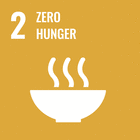
Zero hunger, food security, nutrition and health
Agroecology promotes local, stable and diverse diets with year-round integrated production of healthy and nutritious foods, since it is anchored in diversified, resilient, and sustainable territorial production systems. Farms and ecosystems managed through agroecological practices can enhance the four dimensions of food security – availability, access, stability, and utilization – which contribute to reducing rural poverty, enhancing resilience, promoting local development, and improving communities’ livelihoods.
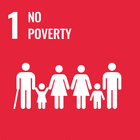
Poverty alleviation
Agroecology helps boost the livelihoods of family farmers and decreases rural poverty by reducing farmers’ reliance on external inputs, subsidies and volatility of market prices. Agroecology can promote increased economic resilience, provide income stability over the year and connect consumers to producers, thereby improving bargaining power and reducing profit loss when public policy provides support and access to finance and secure markets.

Climate change resilience
Agroecology helps to protect, restore and improve agriculture and food systems in the face of climate shocks and stressors. Diverse, well-integrated agroecological systems can promote greater carbon sequestration, increase resilience of livelihoods and provide climate change mitigation and adaptation solutions. Agroecological systems are also better able to resist other societal shocks and stressors, such as pandemics and market disruptions, by re-localizing food systems and shortening value-chains, leading to greater resilience.
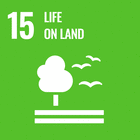
Biodiversity
Integrated agroecological approaches sustain and enhance natural functions and ecosystem services, including the restoration degraded soils, particularly in drylands, with a spillover effect on food security, resilience and sustainable livelihoods. Diverse agroecological systems, such as polycultures, animal-integration systems and agroforestry systems, harness ecosystem benefits such as pest control, pollination, soil health and erosion control, while sustaining productivity.
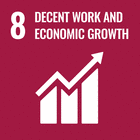
Youth engagement
Agroecology provides innovative solutions and decent employment for youth. Agroecology is based on knowledge intensive, environmentally friendly, socially responsible, innovative, and skilled labour agricultural production. As a bottom-up, grassroots paradigm for sustainable rural development, agroecology empowers people and communities to become their own agents of change.
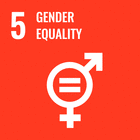
Gender self-determination
Women are building agroecology into their everyday practices: preserving and multiplying native seeds; producing healthy, diverse food without pesticides; raising local and indigenous livestock breeds; promoting the preservation of local biodiversity and landscapes; and carrying out artisanal fishing while protecting rivers, lakes and seas. Agroecology applies the practices of solidarity by collective actions to reduce gender inequity by addressing underlying power imbalances that perpetuate discrimination and oppression.
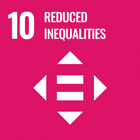
Human rights
Agroecology champions inclusion of marginalized groups and fair access to resources for all. Agroecology helps in furthering the realization of the right to food by advocating for a people-centered approach, with focus on the most vulnerable. Agroecology promotes inclusive, responsible and transparent governance of resources. This entails empowerment of local and community leaders.
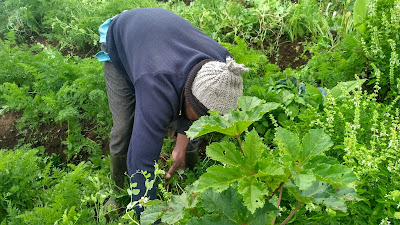







0 Comment to "Agroecology, What is it all About?"
Post a Comment